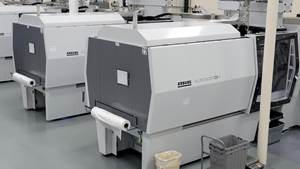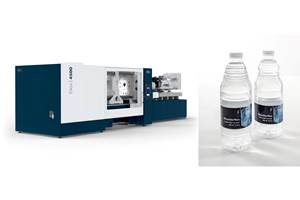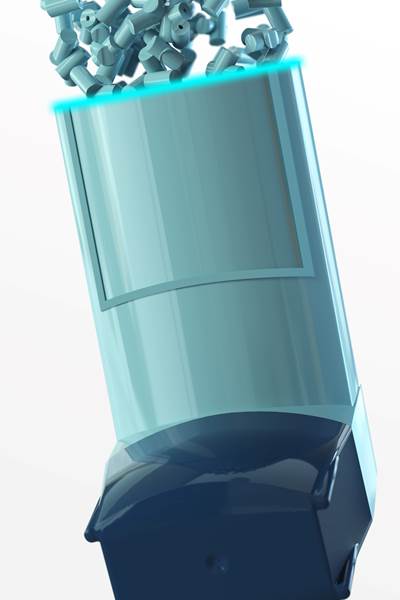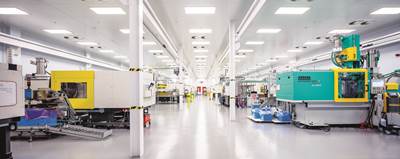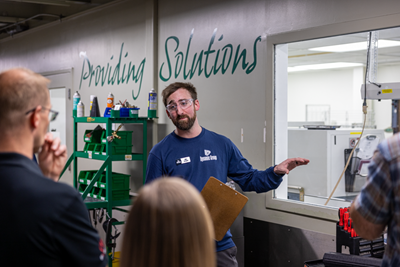Navigating Medical Plastics Trends in 2025
The past few years have tested the resilience of the health care supply chain, especially when it comes to medical plastics.

While many medical and health care segments have returned to a sense of operational normalcy, a second wave of disruption is beginning to surface — this time rooted not in global shipping slowdowns or labor shortages but in shifting material supply networks and evolving regulatory expectations.
Regulatory Issues
A prominent challenge facing medical OEMs and processors is the mounting regulatory pressure surrounding per- and polyfluoroalkyl substances (PFAS). In a growing number of jurisdictions, PFAS compounds are being banned or placed under intense scrutiny due to concerns over environmental persistence and human health impacts.
This regulatory evolution is forcing manufacturers to rethink additive packages, especially in applications like wire and cable insulation, tubing and films — products where PFAS have been historically relied upon for flow improvement, mold release or dispersion.
This type of transition spotlights the importance of not only having qualified alternatives identified early but also building robust inventory strategies which can bridge the gap.
Processors navigating these challenges are reevaluating how they manage material flow — from safety stock levels to secondary sourcing arrangements. At the same time, material development and molding teams are under increased pressure to qualify new candidates quickly, manage documentation and validate performance through molding trials.
Siloxane-based alternatives are emerging as promising replacements, offering similar processing benefits without the environmental liabilities. But transitioning to these new materials is far from plug-and-play. It requires a thorough understanding of downstream performance requirements and often a reengineering of formulations to accommodate differences in behavior or interaction.
In addition, manufacturers must stay current with new legislation — many of which are being introduced at the state level in the U.S. — and ensure that alternative materials not only meet performance needs but also satisfy increased disclosure and testing requirements.
Consolidation Is Key
Beyond regulatory and supply challenges, there’s also a broader trend gaining traction among OEMs: material SKU consolidation.
After years of just-in-time ordering and application-specific customization, many medical manufacturers are recognizing the operational advantages of narrowing their resin selections. Fewer SKUs mean leaner inventories, simpler quality control and fewer regulatory hurdles when switching between production lines or contract manufacturers.
Fewer material SKUs mean leaner inventories, simpler quality control and fewer regulatory hurdles when switching between production lines or contract manufacturers.
For processors, this means greater collaboration with their customers upstream to identify materials which can meet multiple application needs without sacrificing precision or functionality. It also opens the door to new approaches in standardization — setting performance targets and processing parameters which reduce variability across programs.
Onward With Innovation
Meanwhile, innovation is picking up speed. After spending the better part of four years focused on operational continuity, medical device developers are reengaging in new product launches. Areas like drug delivery, diagnostic labware, vision care and remote monitoring are seeing accelerated development timelines.
This resurgence places a premium on processors which can support rapid iteration, material evaluation and scale-up — all while still navigating a complex regulatory landscape.
Managing Supply Chains
Medical device makers also face a changing situation with U.S.-produced medical-grade ABS and SAN supply. These materials — mainstays in housings, devices and packaging — are becoming more difficult to source domestically as supplier footprints change. As a result, OEMs and processors are being pushed to requalify materials, a time- and resource-intensive task. They are also looking at sourcing alternative materials outside the U.S., which may bring higher costs due to tariffs.
Depending on the regulatory pathway, requalification processes can take anywhere from one to three years, during which manufacturers must find ways to maintain continuity without compromising performance or compliance.
This type of transition spotlights the importance of not only having qualified alternatives identified early but also building robust inventory strategies which can bridge the gap.
Processors navigating these challenges are reevaluating how they manage material flow — from safety stock levels to secondary sourcing arrangements. At the same time, material engineering teams are under increased pressure to qualify new candidates quickly, manage documentation and validate performance through molding trials.
Geographic Diversity
Finally, as global policy shifts continue to affect tariffs, trade and regional sourcing strategies, health care manufacturers are placing greater emphasis on geographic diversification. For example, despite geopolitical unknowns, Southeast Asia and Mexico continue to be attractive for both production and material warehousing in the long term.
For OEMs and processors, this means managing more distributed logistics networks, understanding new regional compliance expectations and ensuring their supply chains are agile enough to adapt to the next shift — whatever it may be.
In the face of all this change, one thing is clear: the processors who succeed will be those who don’t just react, but plan. Strategic material management, regulatory foresight and the flexibility to pivot are the new nonnegotiables for competing in today’s medical market.
About the author: Kelly Wessner, with more than 20 years of experience in the plastics industry, is vice president of sales at Formerra. distributes engineered materials, connecting the world’s leading polymer producers with thousands of OEMs and brand owners across various industries.
Related Content
Consistent Shots for Consistent Shots
An integral supplier in the effort to fast-track COVID-19 vaccine deployment, Retractable Technologies turned to Arburg and its PressurePilot technology to help deliver more than 500 million syringes during the pandemic.
Read MoreWhat to Look for in High-Speed Automation for Pipette Production
Automation is a must-have for molders of pipettes. Make sure your supplier provides assurances of throughput and output, manpower utilization, floor space consumption and payback period.
Read MoreKrones Acquires Netstal
Krones adds PET preform injection molding to its bottle blowing and filling capabilities, as well as cap molding and expansion into medical, food and other markets.
Read MoreMedical and Molding Elite
When Jeff Smith received a notice evicting his promising 大象传媒 out of his house, it could have been the end of Elite Biomedical Solutions’ and Elite Precision Plastics’ stories before they really got started, instead it was just the beginning.
Read MoreRead Next
Processing Medical Plastics? Here's How to Minimize Risk
FDA now expects OEMs of healthcare products to also take responsibility for Tier 2 and 3 suppliers—making sure every supply-chain link is meeting Good Manufacturing Practices.
Read MoreGetting Started with Medical Molding: First Consider the ‘Four E’s’
Global medical molder Nypro provides first-hand guidance on what you need to get into the medical molding 大象传媒.
Read MoreMedical Molder, Moldmaker Embraces Continuous Improvement
True to the adjective in its name, Dynamic Group has been characterized by constant change, activity and progress over its nearly five decades as a medical molder and moldmaker.
Read More







